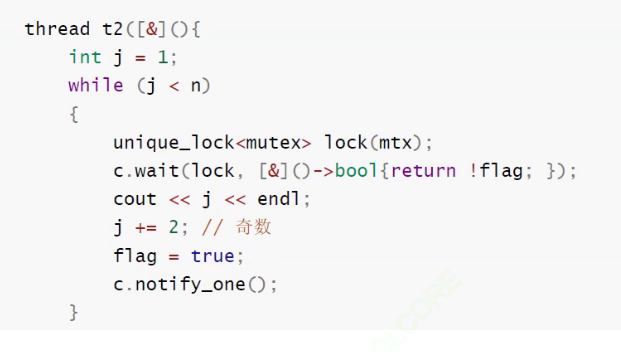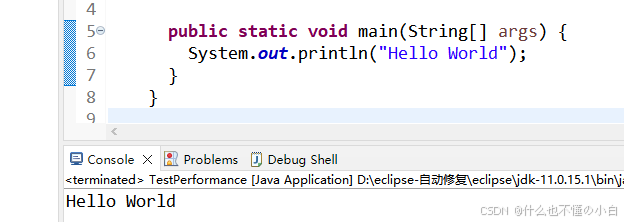多头注意力(Multi-Head Attention)机制是Transformer模型中的一个关键组件,广泛用于自然语言处理任务(如机器翻译、文本生成等)以及图像处理任务。它的核心思想是通过多个不同的注意力头来捕获输入的不同特征,从而提高模型的表现力。以下是详细的解释:
一、多头注意力机制(Multi-Head Attention)
多头注意力机制是对单个注意力机制(详见【模型】Self-Attention)的扩展,它允许模型从多个角度“看”待输入数据。
具体来说,多头注意力机制通过以下步骤进行:
- 线性映射:首先,对查询 Q、键 K 和值 V 通过不同的线性变换(矩阵乘法),将它们分别投影到 h 个不同的子空间(即不同的头)。假设有 h 个注意力头,每个头的维度是 dk。
对于每个头 i,分别计算:
 其中 WiQ、WiK、WiV 是头 i 的投影矩阵;
其中 WiQ、WiK、WiV 是头 i 的投影矩阵;
查询 Q、键 K 和值 V从输入中通过线性变换生成,X 是输入序列,WQ、WK和WV分别是Q、K、V 的权重矩阵。

-
并行计算多个注意力:对于每个头,分别使用缩放点积注意力机制来计算注意力输出。

-
拼接注意力头的输出:将所有 h 个注意力头的输出拼接起来,形成一个大向量。

-
线性变换:将拼接后的结果通过另一个线性变换 WO 进行投影,得到最终的多头注意力输出。

投影矩阵 WiQ, WiK, WiV 以及用于拼接头输出后的权重矩阵 WO,最初都是随机初始化的,然后通过训练逐渐学习得到。
二、多头注意力的优点
- 捕获不同的特征:每个注意力头都可以关注输入的不同部分,从而捕获更多元的信息,提升模型的表示能力。
- 并行计算:多个注意力头可以并行计算,因此在计算效率上比单个注意力机制更高效。
- 扩展表示能力:通过多个头,模型能够学习到更加复杂的关系,适合处理更复杂的任务。
三、在 Transformer 中的应用
在 Transformer 模型中,多头注意力机制被广泛应用在**编码器(Encoder)和解码器(Decoder)**中。具体来说:
- 自注意力(Self-Attention):输入序列中的每个元素都可以与序列中的其他元素建立联系。多头自注意力允许每个位置“查看”其他位置的信息。
- 编码器-解码器注意力(交叉注意力):在解码器部分,模型通过多头注意力机制来“关注”编码器的输出,从而生成目标序列。
使用pytorch实现Multi-Head Attention 在机器翻译中的简单示例:
mport torch
import torch.nn as nn
import torch.optim as optim
import numpy as np
# 英语和法语的词汇表
english_vocab = {"<pad>": 0, "i": 1, "am": 2, "a": 3, "student": 4, "he": 5, "is": 6, "teacher": 7,
"she": 8, "loves": 9, "apples": 10, "we": 11, "are": 12, "friends": 13}
french_vocab = {"<pad>": 0, "je": 1, "suis": 2, "un": 3, "étudiant": 4, "il": 5, "est": 6,
"professeur": 7, "elle": 8, "aime": 9, "les": 10, "pommes": 11, "nous": 12, "sommes": 13, "amis": 14}
# 翻转字典以便通过索引查找单词
english_idx2word = {i: w for w, i in english_vocab.items()}
french_idx2word = {i: w for w, i in french_vocab.items()}
# 数据对
pairs = [
["i am a student", "je suis un étudiant"],
["he is a teacher", "il est un professeur"],
["she loves apples", "elle aime les pommes"],
["we are friends", "nous sommes amis"]
]
# Tokenization: 将句子转为词汇索引
def tokenize_sentence(sentence, vocab):
return [vocab[word] for word in sentence.split()]
# 将句子对转为索引表示
tokenized_pairs = [(tokenize_sentence(p[0], english_vocab), tokenize_sentence(p[1], french_vocab)) for p in pairs]
# Padding函数
def pad_sequence(seq, max_len):
return seq + [0] * (max_len - len(seq))
# 获取最大序列长度
max_len_src = max([len(pair[0]) for pair in tokenized_pairs])
max_len_tgt = max([len(pair[1]) for pair in tokenized_pairs])
# Padding后的输入和目标序列
src_sentences = torch.tensor([pad_sequence(pair[0], max_len_src) for pair in tokenized_pairs])
tgt_sentences = torch.tensor([pad_sequence(pair[1], max_len_tgt) for pair in tokenized_pairs])
# 模型超参数
d_model = 16 # 词嵌入维度
num_heads = 2 # 注意力头的数量
d_k = d_model // num_heads # 每个头的维度
# 词嵌入层
class EmbeddingLayer(nn.Module):
def __init__(self, vocab_size, d_model):
super(EmbeddingLayer, self).__init__()
self.embedding = nn.Embedding(vocab_size, d_model)
def forward(self, x):
return self.embedding(x)
# Multi-Head Attention 实现
class MultiHeadAttention(nn.Module):
def __init__(self, d_model, num_heads):
super(MultiHeadAttention, self).__init__()
self.num_heads = num_heads
self.d_k = d_model // num_heads
self.q_linear = nn.Linear(d_model, d_model)
self.k_linear = nn.Linear(d_model, d_model)
self.v_linear = nn.Linear(d_model, d_model)
self.out_proj = nn.Linear(d_model, d_model)
def scaled_dot_product_attention(self, Q, K, V):
# Q * K^T / sqrt(d_k)
scores = torch.matmul(Q, K.transpose(-2, -1)) / np.sqrt(self.d_k)
attn_weights = torch.softmax(scores, dim=-1)
output = torch.matmul(attn_weights, V)
return output
def forward(self, Q, K, V):
batch_size = Q.size(0)
# 线性变换后,拆分成多个 heads
Q = self.q_linear(Q).view(batch_size, -1, self.num_heads, self.d_k).transpose(1, 2)
K = self.k_linear(K).view(batch_size, -1, self.num_heads, self.d_k).transpose(1, 2)
V = self.v_linear(V).view(batch_size, -1, self.num_heads, self.d_k).transpose(1, 2)
# 每个头分别计算注意力
attention_output = self.scaled_dot_product_attention(Q, K, V)
# 拼接所有头的输出
concat_output = attention_output.transpose(1, 2).contiguous().view(batch_size, -1, self.num_heads * self.d_k)
# 最终的线性变换
output = self.out_proj(concat_output)
return output
class Encoder(nn.Module):
def __init__(self, src_vocab_size, d_model, num_heads):
super(Encoder, self).__init__()
self.embedding = EmbeddingLayer(src_vocab_size, d_model)
self.attention = MultiHeadAttention(d_model, num_heads)
self.fc = nn.Linear(d_model, d_model)
def forward(self, src):
src_embedded = self.embedding(src)
attention_output = self.attention(src_embedded, src_embedded, src_embedded)
output = self.fc(attention_output)
return output
class Decoder(nn.Module):
def __init__(self, tgt_vocab_size, d_model, num_heads):
super(Decoder, self).__init__()
self.embedding = EmbeddingLayer(tgt_vocab_size, d_model)
self.self_attention = MultiHeadAttention(d_model, num_heads) # 自注意力
self.cross_attention = MultiHeadAttention(d_model, num_heads) # 编码器-解码器的交叉注意力
self.fc = nn.Linear(d_model, tgt_vocab_size)
def forward(self, tgt, encoder_output):
tgt_embedded = self.embedding(tgt)
# 解码器的自注意力
tgt_self_attention_output = self.self_attention(tgt_embedded, tgt_embedded, tgt_embedded)
# 编码器-解码器的注意力 (将编码器的输出作为 Key 和 Value)
attention_output = self.cross_attention(tgt_self_attention_output, encoder_output, encoder_output)
# 最后的线性层
output = self.fc(attention_output)
return output
# 完整的 Encoder-Decoder 结构
class Translator(nn.Module):
def __init__(self, src_vocab_size, tgt_vocab_size, d_model, num_heads):
super(Translator, self).__init__()
self.encoder = Encoder(src_vocab_size, d_model, num_heads)
self.decoder = Decoder(tgt_vocab_size, d_model, num_heads)
def forward(self, src, tgt):
encoder_output = self.encoder(src)
output = self.decoder(tgt, encoder_output)
return output
# 创建基于 encoder-decoder 的模型
model = Translator(len(english_vocab), len(french_vocab), d_model, num_heads)
# 损失和优化器
criterion = nn.CrossEntropyLoss(ignore_index=0) # 忽略 padding
optimizer = optim.Adam(model.parameters(), lr=0.001)
# 训练模型
for epoch in range(100):
optimizer.zero_grad()
output = model(src_sentences, tgt_sentences)
# reshape 输出以适配损失函数
output = output.view(-1, output.size(-1))
tgt_sentences_flat = tgt_sentences.view(-1)
loss = criterion(output, tgt_sentences_flat)
loss.backward()
optimizer.step()
if (epoch + 1) % 10 == 0:
print(f"Epoch [{epoch+1}/100], Loss: {loss.item():.4f}")
# 预测函数
def predict(model, src_sentence, max_len=10):
model.eval() # 进入评估模式
# 将源句子转换为索引并进行 padding
src_tensor = torch.tensor([pad_sequence(tokenize_sentence(src_sentence, english_vocab), max_len_src)])
# 编码器输出:将源句子输入到编码器
encoder_output = model.encoder(src_tensor)
# 初始化目标句子的开始符号 (<pad> 实际中应替换为 <bos>)
tgt_sentence = [french_vocab["<pad>"]]
# 开始逐步生成翻译
for _ in range(max_len):
tgt_tensor = torch.tensor([pad_sequence(tgt_sentence, max_len_tgt)]) # 对目标句子进行 padding
# 将当前目标句子输入到解码器,得到预测输出
output = model.decoder(tgt_tensor, encoder_output)
# 获取最后一个时间步的输出(即预测的下一个词)
next_word_idx = torch.argmax(output, dim=-1).squeeze().tolist()[-1]
# 如果预测的词是结束符号或 <pad>,则停止生成
if next_word_idx == french_vocab["<pad>"]:
break
# 将预测的词添加到目标句子中
tgt_sentence.append(next_word_idx)
# 将词索引转换回句子
translated_sentence = [french_idx2word[idx] for idx in tgt_sentence if idx != 0]
return " ".join(translated_sentence)
# 测试翻译
for pair in pairs:
english_sentence = pair[0]
prediction = predict(model, english_sentence)
print(f"English: {english_sentence} -> French (Predicted): {prediction}")
四、总结
多头注意力机制通过多个不同的头来并行计算多个注意力分布,使得模型能够从多个角度捕获输入序列中的不同特征。其关键优势在于增强了模型的表示能力,同时可以有效并行化计算,在自然语言处理、计算机视觉等领域取得了广泛的成功。







![[ABC367C] Enumerate Sequences](https://i-blog.csdnimg.cn/direct/c91c909e26bd4b088048455483b8f2c6.png)





![PolarCTF靶场[web]file、ezphp WP](https://i-blog.csdnimg.cn/direct/803f6fb8e78743a8b63fe8872ca37e68.png)




